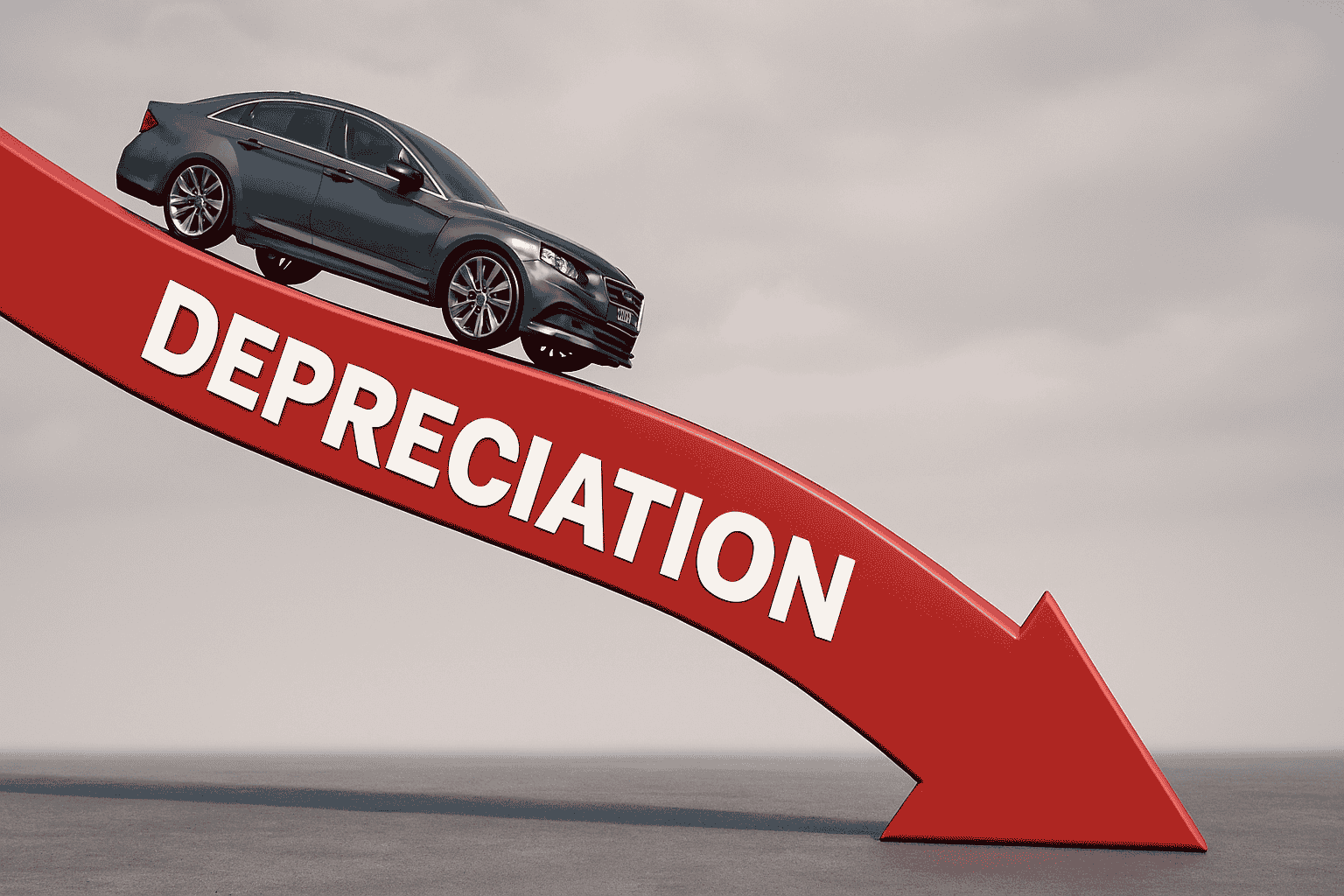Most car buyers focus on price, financing, and features. Few consider how the timing of their purchase intersects with the vehicle’s depreciation curve. Yet this invisible factor can quietly reshape your total cost of ownership, your loan structure, and your resale strategy. Understanding how depreciation behaves across model cycles, inventory pressure, and usage profiles is essential if you want to avoid overpaying or misaligning your loan terms.
Depreciation Is Not Just a Long-Term Concern
Depreciation is often treated as a distant issue. Buyers assume it only matters when they sell or trade in. But depreciation begins the moment a vehicle is titled. In fact, the steepest drop often happens within the first 12 months. That drop affects your loan-to-value ratio, your insurance premiums, and your ability to refinance or exit early.
If you buy at the wrong point in the depreciation curve, you risk being upside down on your loan. That means owing more than the car is worth. It also means higher interest rates, limited refinancing options, and reduced flexibility if your needs change.
Model Year Transitions Create Timing Windows
One of the most predictable depreciation triggers is the model year transition. When a new model hits the lot, the previous year’s inventory loses value even if it is brand new. Dealers know this and often offer incentives to clear out aging stock. But those incentives do not always offset the accelerated depreciation.
Smart buyers time their purchase just before the new model arrives. This allows them to negotiate discounts while avoiding the steepest part of the curve. It also improves loan fit by aligning the vehicle’s value with the financing structure. A well-timed purchase can reduce monthly payments and shorten the break-even point.
Inventory Pressure Accelerates Depreciation
Dealers do not want cars sitting on the lot. A vehicle that has been unsold for 60 days or more becomes a liability. That pressure often leads to price drops, bundled incentives, and aggressive financing offers. But it also signals that the vehicle may be nearing a depreciation cliff.
If you buy a car that has been heavily discounted due to inventory pressure, make sure the loan terms reflect its true market value. Do not finance based on the original MSRP. Instead, structure your loan around the adjusted price and expected depreciation over the next 12 to 24 months.
Usage Profile and Mileage Shape the Curve
Depreciation is not just about age. It is also about usage. A low-mileage commuter car will depreciate differently than a high-mileage SUV used for long trips. Service history, accident records, and even regional climate can influence how fast a vehicle loses value.
Before you commit to a loan, forecast your usage profile. If you plan to drive 20,000 kilometers per year, your vehicle will depreciate faster than average. That means you need a loan with flexible terms, early payoff options, or a shorter duration. Matching your loan to your usage curve prevents surprises and protects your equity.
Loan Fit Is a Moving Target
Loan fit is not static. It changes based on interest rates, vehicle value, and your financial goals. A five-year loan might look affordable today, but if the car loses 40 percent of its value in the first two years, you are locked into a structure that no longer makes sense.
Use depreciation forecasts to model different loan scenarios. Compare short-term loans with higher payments against longer terms with lower monthly costs. Then layer in your resale or trade-in timeline. If you plan to exit the vehicle in three years, a seven-year loan is a mismatch. You will owe more than the car is worth when it is time to sell.
Resale Timing Depends on Depreciation Behavior
Resale value is not just about market demand. It is about timing. If you sell during a steep drop, you lose equity. If you sell during a plateau, you retain more value. Understanding when your vehicle will hit those phases allows you to plan your exit strategy.
This is especially important for buyers who lease with the intent to buy out or who finance with early payoff goals. If you misjudge the curve, you may find that your vehicle depreciation outpaces your equity growth. That creates friction when refinancing, trading in, or switching vehicles.
Treat Depreciation as a Financial Signal
Depreciation is not just a background metric. It is a financial signal that shapes your purchase timing, loan structure, and ownership strategy. By understanding how the curve behaves across model years, inventory cycles, and usage patterns, you can align your financing with reality instead of assumptions.
Whether you are buying new, used, or certified pre-owned, timing your purchase around the depreciation curve is one of the most effective ways to protect your investment and optimize your loan fit. The market moves. Your financing should move with it.




